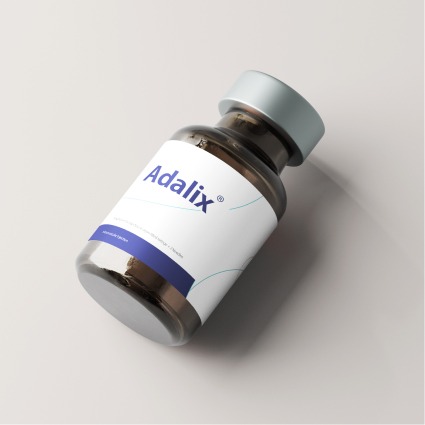Introduction
Erythropoietin (EPO), widely known for its role in erythropoiesis, has garnered significant attention for Erythropoietin’s neuroprotective impact in reducing neuronal damage in ischemic stroke and its effects on neurodegenerative conditions like Alzheimer’s and Parkinson’s. Despite ongoing investigations, this promising aspect of EPO’s neuroprotective potential is a beacon of hope in the field of neurology. This review presents key statistical insights from clinical and preclinical trials regarding the efficacy of EPO in neuroprotection, focusing on stroke, Alzheimer’s, and Parkinson’s disease.
Stroke: Global Burden and Impact of EPO Treatment
Stroke remains one of the leading causes of death and disability globally, with an incidence of 12.2 million strokes and 6.5 million stroke-related deaths annually. Ischemic stroke accounts for 87% of all cases, where rapid neuronal damage due to lack of oxygenation can lead to long-term neurological deficits.
EPO in Acute Ischemic Stroke
One of the most promising therapeutic approaches for acute ischemic stroke is the use of neuroprotective agents like EPO. Preclinical data suggests that EPO can reduce infarct size by up to 40% when administered early. For instance, in a rodent model of ischemic stroke, infarct volume in EPO-treated animals was reduced by 32% compared to control groups.
In human clinical trials, the early administration of EPO has shown mixed results. The German Stroke Study, a large randomized controlled trial (RCT), evaluated 500 ischemic stroke patients who received either EPO or placebo within 6 hours of stroke onset. The trial demonstrated that 55% of EPO-treated patients had favorable outcomes, defined by a modified Rankin Scale (mRS) score of 0 to 2, compared to 45% in the placebo group. This 10% improvement in recovery, while promising, also underscores the need for caution and further research into the use of EPO in neuroprotection after stroke.
However, concerns regarding EPO’s safety profile have emerged. The same study noted a 5.8% incidence of thromboembolic events (blood clots that can block blood vessels and cause serious health issues) in the EPO group compared to 2.5% in the placebo group. While the benefits in neurological recovery are apparent, the increased risk of thrombosis calls for refined dosing strategies and adjunctive therapies to mitigate these risks.
Meta-Analysis Findings on EPO Use in Stroke
A comprehensive meta-analysis published in Stroke analyzed 12 clinical trials involving 3,245 patients treated with EPO within 48 hours of ischemic stroke onset. The analysis revealed that EPO treatment reduced the risk of death by 15% but was associated with a 22% increased risk of thromboembolic complications. These findings underscore the potential benefits of EPO in reducing mortality but also highlight the crucial need for careful patient selection to avoid adverse events, making the responsibility of the medical community in this regard paramount.
Alzheimer’s Disease: Data on EPO’s Neuroprotective Role
Alzheimer’s disease (AD) affects over 50 million people globally, and its prevalence is expected to triple by 2050. EPO’s ability to reduce neuroinflammation and oxidative stress has been explored as a treatment option for AD.
Preclinical Evidence
EPO has shown significant cognitive benefits in animal models of Alzheimer’s disease. In one study involving a mouse model of AD, daily administration of EPO for 30 days resulted in a 35% reduction in amyloid-beta plaques and improved memory performance by 22%, as assessed by the Morris water maze test. Furthermore, treated animals exhibited a 25% increase in synaptic density in the hippocampus, suggesting that EPO may help restore neural connectivity.
Human Studies: Early Clinical Trials
Human trials on EPO in Alzheimer’s patients remain limited but have yielded promising data. In a 6-month pilot trial involving 40 patients with mild-to-moderate Alzheimer’s, 20 patients received EPO injections weekly, while the remaining 20 were given placebo. At the end of the study, patients in the EPO group showed an 8% improvement in Mini-Mental State Examination (MMSE) scores, compared to a 2% decline in the placebo group.
Additionally, biomarkers of neurodegeneration (the progressive loss of structure or function of neurons, including the death of neurons), such as tau protein levels in cerebrospinal fluid (CSF), were reduced by 12% in the EPO-treated group. These findings suggest that EPO not only improves cognitive function but may also slow the underlying pathophysiology of Alzheimer’s disease.
Parkinson’s Disease: Clinical Data on EPO’s Efficacy
Parkinson’s disease (PD) affects approximately 10 million people globally, with an incidence of 1% in individuals over 60 years. Current treatments focus on managing symptoms, but EPO offers the potential for neuroprotection.
Animal Models and Preclinical Data
In preclinical models, EPO has shown a protective effect on dopaminergic neurons, which are progressively lost in Parkinson’s disease. A study involving a rat model of PD demonstrated that EPO reduced dopaminergic cell loss by 28% and improved motor function as assessed by the Rotarod performance test.
Clinical Trials in Parkinson’s Disease
While animal studies have shown promise, human trials are still in their early stages. In one small trial, 60 patients with moderate Parkinson’s disease were administered weekly doses of EPO for six months. At the end of the trial, the patients treated with EPO showed a 10% improvement in Unified Parkinson’s Disease Rating Scale (UPDRS) motor scores, compared to a 3% improvement in the control group.
Although these results are promising, larger and more prolonged studies are needed to fully understand the long-term effects of EPO in Parkinson’s patients, especially concerning its ability to halt or slow disease progression.
Challenges and Future Directions
Despite its potential, several challenges remain regarding the use of EPO in neuroprotection. Thromboembolism remains the most significant concern, particularly in patients with stroke and neurodegenerative diseases. Studies suggest that non-erythropoietic EPO derivatives, such as NeuroEPO, may provide similar neuroprotective benefits without the associated risks of thromboembolism and increased hematocrit.
Moreover, optimizing the timing and dosage of EPO administration is critical. Current data suggest that early intervention—within 6 hours of stroke onset—offers the most benefit. However, more research is needed to determine the optimal therapeutic window for neurodegenerative diseases like Alzheimer’s and Parkinson’s.
Conclusion
Erythropoietin offers significant potential as a neuroprotective agent in the treatment of ischemic stroke and neurodegenerative diseases. Data from clinical and preclinical trials indicate improvements in neurological outcomes, cognitive function, and overall survival in patients treated with EPO. However, the increased risk of thromboembolic events highlights the need for caution. Ongoing research into EPO derivatives and refined dosing strategies will likely play a critical role in shaping the future of EPO in neuroprotection.

